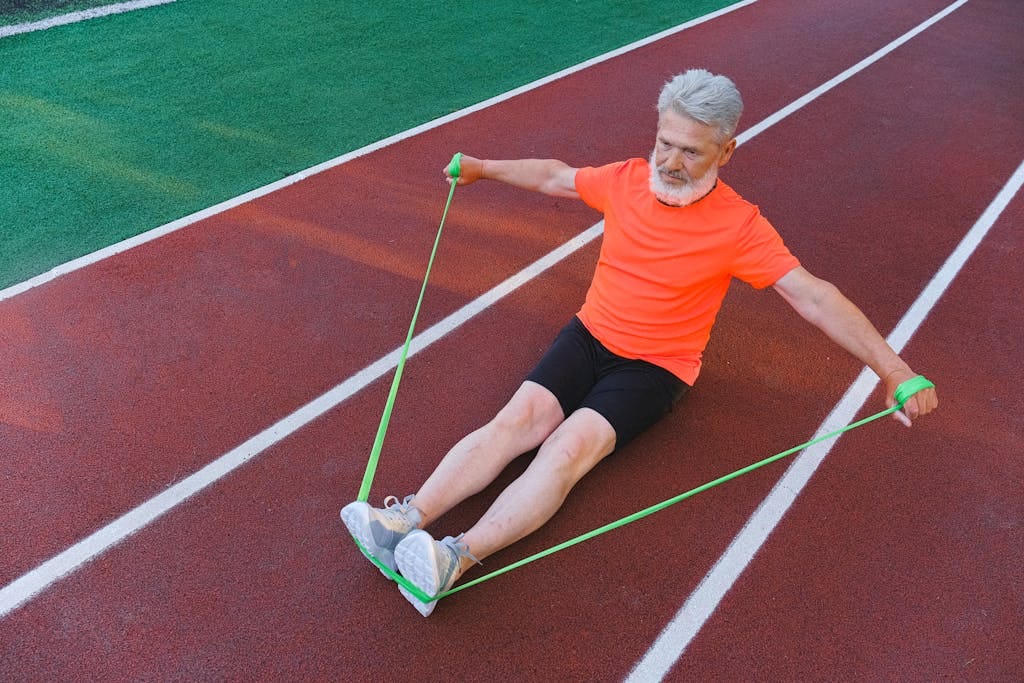FREE SHIPPING OVER $50
A Physical Therapist’s Top Resistance Band Exercises to Stop Joint Pain in Its Tracks
Joint pain can be a real buzzkill, whether it’s from an old injury, overuse, or just the wear and tear of daily life. But what if you could ease that discomfort and strengthen your joints without stepping foot in a gym? Enter resistance bands—a simple, affordable, and incredibly effective tool for improving joint health.
As a physical therapist, I’ve seen firsthand how resistance band exercises can transform joint pain into joint strength. In this article, I’ll share my top resistance band exercises to help you stop joint pain in its tracks. Whether you’re dealing with achy knees, stiff shoulders, or creaky hips, these moves are designed to build stability, improve mobility, and keep you moving pain-free. Let’s get started!
Why Resistance Bands Are Perfect for Joint Health

Before we dive into the exercises, let’s talk about why resistance bands are such a game-changer for joint pain:
- Low Impact: Unlike heavy weights, resistance bands provide tension without putting excessive stress on your joints.
- Versatile: You can use them to target almost any muscle group, from your shoulders to your ankles.
- Portable: Lightweight and compact, resistance bands are perfect for home workouts, travel, or even office breaks.
- Adjustable: With different resistance levels, you can easily tailor the intensity to your fitness level.
Now, let’s move on to the exercises that will help you say goodbye to joint pain.
8 Resistance Band Exercises to Stop Joint Pain
1. Resistance Band Squats
- How to Do It: Stand on the band with feet shoulder-width apart, holding the ends at shoulder height. Lower into a squat, keeping your chest up and knees aligned with your toes. Push through your heels to return to standing.
- Why It Helps: Squats strengthen the muscles around your knees and hips, improving stability and reducing pain.
- Pro Tip: Start with a lighter band and focus on form before increasing resistance.
2. Band Pull-Aparts
- How to Do It: Hold the band with both hands in front of you at shoulder height. Pull the band apart by squeezing your shoulder blades together, then slowly return to the starting position.
- Why It Helps: This exercise strengthens the upper back and shoulders, reducing strain on the shoulder joints.
- Pro Tip: Keep your movements slow and controlled to maximize muscle engagement.
3. Clamshells
- How to Do It: Lie on your side with the band around your thighs, just above your knees. Bend your knees to 90 degrees and keep your feet together. Lift your top knee while keeping your feet touching, then lower it back down.
- Why It Helps: Clamshells target the gluteus medius, a key muscle for hip stability and knee alignment.
- Pro Tip: Focus on keeping your hips stacked and avoid rocking backward.
4. Resistance Band Rows
- How to Do It: Sit on the floor with your legs extended and the band looped around your feet. Hold the ends of the band and pull them toward your torso, squeezing your shoulder blades together. Slowly return to the starting position.
- Why It Helps: Rows strengthen the upper back and improve posture, reducing strain on the neck and shoulders.
- Pro Tip: Keep your core engaged and avoid hunching your shoulders.
5. Lateral Band Walks
- How to Do It: Place the band around your thighs, just above your knees. Sink into a slight squat and take small steps to the side, maintaining tension on the band. Repeat in the opposite direction.
- Why It Helps: This exercise targets the glutes and outer thighs, improving hip stability and reducing knee pain.
- Pro Tip: Keep your knees aligned with your toes and avoid letting them cave inward.
6. Resistance Band Shoulder Press
- How to Do It: Stand on the band with feet shoulder-width apart, holding the ends at shoulder height. Press the band overhead until your arms are fully extended, then slowly lower back down.
- Why It Helps: This move strengthens the shoulder muscles, improving stability and reducing pain.
- Pro Tip: Keep your core engaged to avoid arching your back.
7. Seated Band Leg Extensions
- How to Do It: Sit on a chair with the band looped around one foot and the other end anchored under your opposite foot. Extend your leg straight out, then slowly lower it back down.
- Why It Helps: This exercise strengthens the quadriceps, which support the knee joint.
- Pro Tip: Use a lighter band if you have knee pain and focus on controlled movements.
8. Resistance Band Glute Bridges
- How to Do It: Lie on your back with the band around your thighs, just above your knees. Bend your knees and place your feet flat on the floor. Lift your hips toward the ceiling, squeezing your glutes at the top, then lower back down.
- Why It Helps: Glute bridges strengthen the glutes and hamstrings, reducing strain on the lower back and hips.
- Pro Tip: Avoid arching your lower back by engaging your core throughout the movement.
The Science Behind Resistance Band Training
Research supports the effectiveness of resistance band exercises for joint health:
- Improved Joint Stability: A study in PLOS ONE found that resistance band training significantly improves joint stability and reduces pain in individuals with knee osteoarthritis.
- Enhanced Mobility: Research in Journal of Clinical Nursing shows that resistance band exercises increase range of motion and functional mobility in older adults.
By incorporating these exercises into your routine, you’re not just easing pain—you’re building a stronger, more resilient body.
Tips for Getting the Most Out of Your Workout
- Start Slow: If you’re new to resistance bands, begin with lighter resistance and focus on mastering the form.
- Warm Up: Spend 5-10 minutes warming up with dynamic stretches or light cardio to prepare your joints.
- Progress Gradually: As you get stronger, increase the resistance or the number of repetitions.
- Listen to Your Body: If an exercise causes pain, stop immediately and consult a professional.
- Stay Consistent: Aim for 2-3 resistance band workouts per week for the best results.
Final Thoughts
Joint pain doesn’t have to hold you back. With these resistance band exercises, you can strengthen your muscles, improve your mobility, and keep your joints healthy—all from the comfort of your home. Remember, consistency is key. Stick with it, and you’ll be amazed at how much better you feel.



